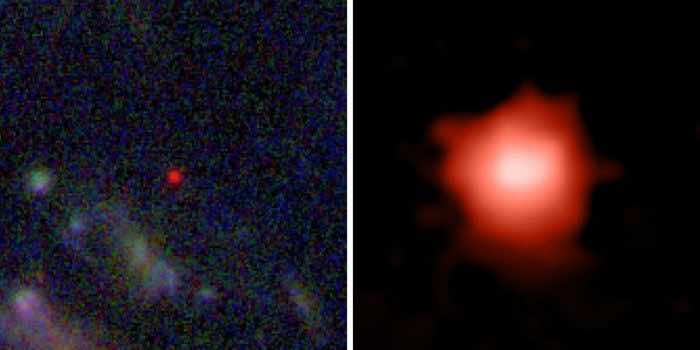Just a week after its first images were shown to the world, the James Webb Space Telescope may have discovered a galaxy that existed 13.5 billion years ago, according to reports.
The galaxy, known as GLASS-z13, was discovered 300 million years after the Big Bang, nearly 100 million years earlier than anything previously found, according to Rohan Naidu of the Harvard Center for Astrophysics.
“We’re potentially looking at the most distant starlight that anyone has ever seen,” he said.
Since GLASS-z13 existed in the early cosmos, its exact age is uncertain because it might have originated at any moment within the first 300 million years. It was discovered in “early release” data from the orbiting observatory’s main infrared imager, dubbed NIRcam. Still, it was not revealed in the first image set published by NASA last week.
The galaxy appears as a blob of red with white in its center when translated from infrared to visible spectrum, as part of a larger view of the distant cosmos known as a “deep field.”
“Astronomy records are crumbling already, and more are shaky,” tweeted NASA’s chief scientist Thomas Zurbuchen.
“Yes, I tend to only cheer once science results in clear peer review. But, this looks very promising,” he added.

One of Webb’s most exciting prospects is the discovery of the first galaxies that emerged after the Big Bang 13.8 billion years ago. Since these are so far away from Earth, by the time their light reaches us, it has been stretched by the expansion of the cosmos and shifted to the infrared portion of the light spectrum, which Webb is uniquely prepared to detect.
Mr. Naidu and colleagues combed through this distant universe’s infrared data, looking for a distinctive signal of extremely distant galaxies.

Under a specific infrared wavelength threshold, all photons are absorbed by the neutral hydrogen of the cosmos that stands between the object and the observer. The team could pinpoint where these photon drop-offs appeared by analyzing data obtained through multiple infrared filters, from which they deduced the presence of these most distant galaxies.
“We searched all the early data for galaxies with this very striking signature, and these were the two systems that had by far the most compelling signature,” said Mr. Naidu.
“There’s strong evidence, but there’s still work to be done,” said Mr. Naidu.
The team plans to specifically request telescope time from Webb’s management to conduct spectroscopy to determine its precise distance.

However, the team has already discovered some unexpected features. For example, the galaxy has the mass of a billion Suns, which Mr. Naidu described as “potentially very surprising, and that is something we don’t really understand” given how soon after the Big Bang it originated.
The most spectacular space telescope ever created, Webb, which was launched in December and has been fully operational since last week, is thought to herald in a new era of discovery, and we can’t wait.


